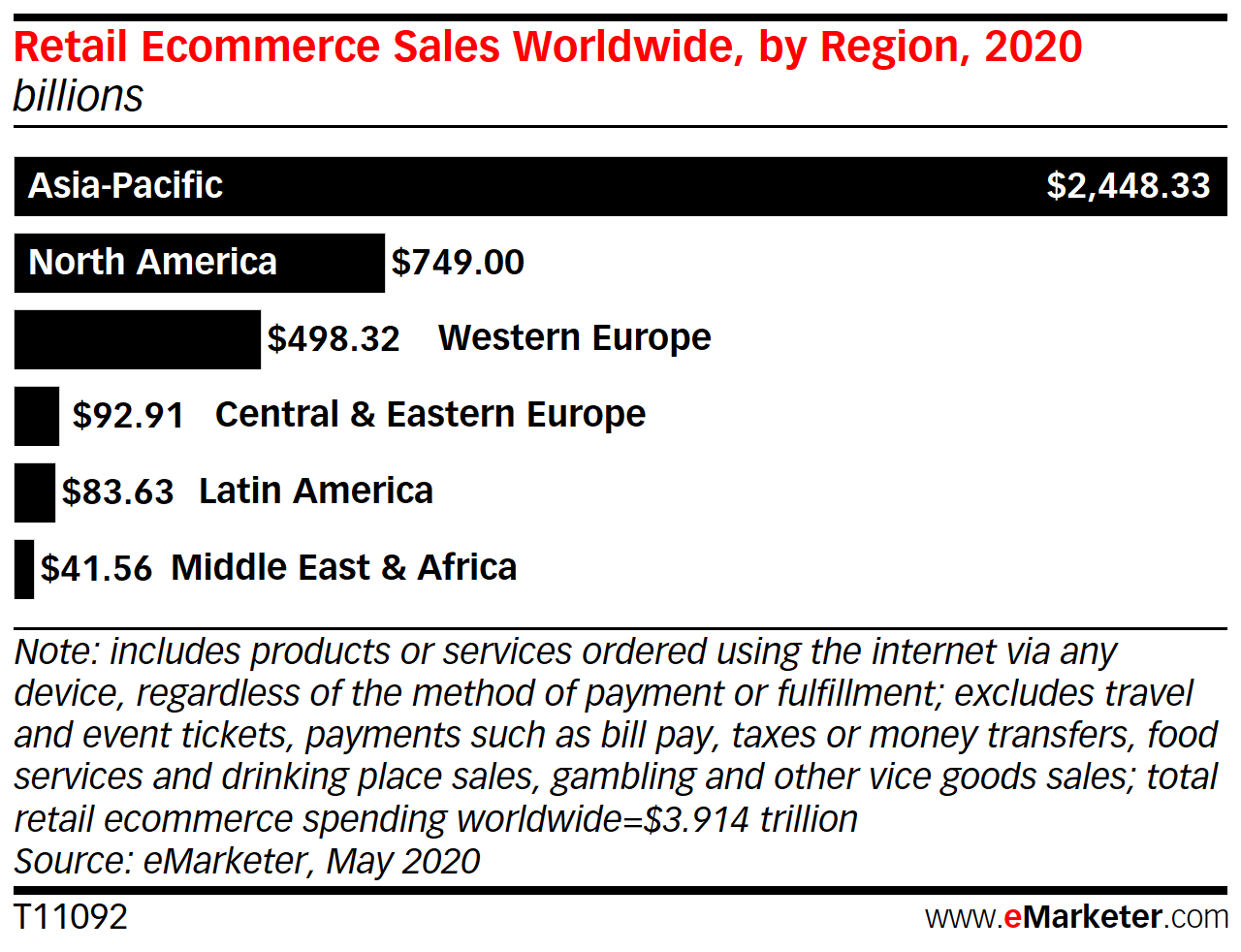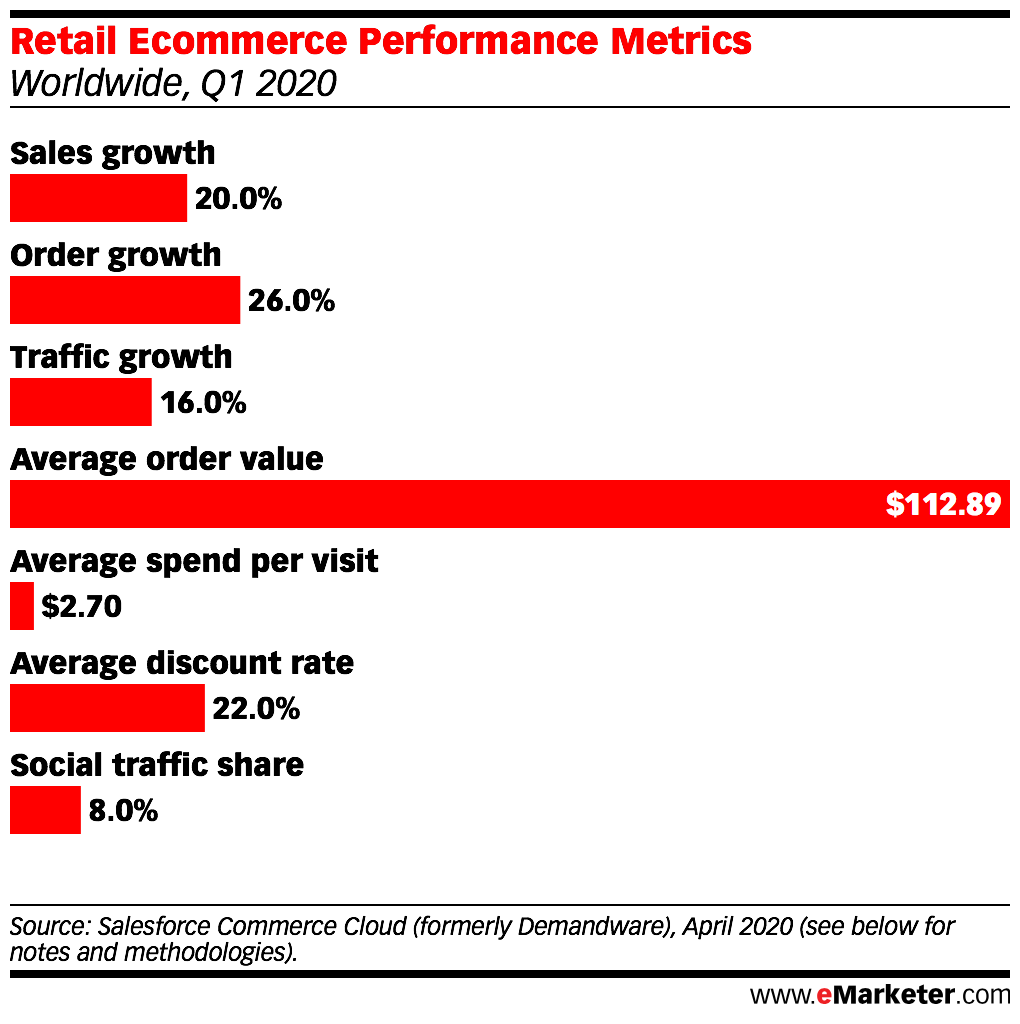E-commerce has revolutionised retail. One of the main reasons, is the level of comfort provided to the shopper, making online shopping one of the most popular online activities. It is also true that many consumers today treat online shopping as a leisure activity in its own right with an ever-growing appetite for life-enhancing experiences along with material things.
Improved integration, personalisation of the customer experience, enhanced return policies, low or no shipping costs, and an increase in trust that shoppers have when they are purchasing online; these are a few more reasons among countless others that will skyrocket the number of online buyers (from 1.66 in 2017) to 2.14 billion by 2021, increasing sales from $1.3 trillion in 2014 to $4.5 trillion in 2021. And 2020 is here to transform the world of e-commerce even further.

Undeniably, COVID-19 will be one of the most significant impacts on e-commerce in 2020. When governments started implementing lockdown policies that closed stores (with many of them expected to remain shut for good) and restricted social movement for more than three months, more and more people turned to online shopping making the e-commerce industry one of the biggest beneficiaries of the pandemic.
Although the panic-buying that the pandemic sparked at first has subsided, numerous experts predict that this will not be merely a short-term boost; on the contrary, the current situation is more likely to cause a permanent behavioural shift towards online purchases. The benefit of contactless payment and the degree of convenience e-commerce offers are expecting to increase penetration rates from 15% currently, up to 25% by 2025.

The e-commerce world is experiencing rapid growth, and numerous things are expecting to change in the next few years. It is also becoming increasingly competitive, making imperative for every e-commerce business that wishes to survive, to evolve side-by-side with it by adopting new technologies and omnichannel approaches, embracing partnership opportunities, and more.
Here are the top five e-commerce trends every company with an online presence need to look out for. Nevertheless, no matter what e-commerce trends you choose to pursue in order to build a brand experience, your primary focus should always be a seamless, personalised, and engaging shopping experience for your customers, accompanied by proactive customer service and support.
Social Media and E-Commerce
Social media has changed the way we live our daily lives, and as of late, the way we purchase things. It has become an internal part of the omnichannel-focused e-commerce universe, and social commerce (the process of making purchases directly on social media platforms) has been steadily gaining ground over the last few years, and it will keep growing. Social media offer you the ability to direct online shoppers to a new product, service, or deal, as well as engage with them and resolve customer service issues in real-time. That way, you will be creating brand awareness, brand loyalty, and a sense of community between you and your customers.
With 71% of adults with Internet access using social media, every e-commerce business can benefit from marketing on social platforms like Facebook, Twitter, and Instagram. You can expand your online reach and interact with your target audience where they are spending the most time online, guide them in real-time through their buying process, and engage with them in a less formal two-way conversation. Additionally, given the nature of social media and the constant need of people to showcase their participation in activities on them, satisfied customers will more likely share your brand with friends and family, and according to research, 71% of consumers are more likely to purchase based on social media referrals.
You can find a comprehensive guide of which social media platform works better for your e-commerce business here.
Sustainable E-Commerce
With green consumerism on the rise, environmental concerns have a massive impact on consumers’ purchasing decisions nowadays. Therefore, e-commerce business should strive to create more sustainable, environmental-friendly practices. And although these practices are not cheap, research shows that customers are willing to pay a bit extra for supply chain transparency and social and environmental responsibility.
The most important of them are:
· Ethical sourcing of products and components that minimises the impact on the environment and treats workers fairly.
· Eco-friendly supply lines that minimise waste, use renewable energy, and have a low carbon footprint.
· Energy-efficient and resource-saving manufacturing.
· Zero-waste packaging that uses sustainable packaging supplies, reduces packaging size, and eliminates waste.
The Role of Artificial Intelligence
The global retail industry’s expenditure on artificial intelligence (AI) will reach $7.3 billion per annum by 2022 and for good reasons. The integration of artificial intelligence in your e-commerce business will help in creating a more personalised shopping experience for your customers, heightening the quality of your company’s customer service, as well as automate inventory management, increase lead generation, and more. AI makes it possible for e-commerce companies to analyse data sets from a vast number of interactions daily and thus identify patterns of consumer behaviour. That way you can automatically and more affordably provide a curated shopping experience to each one of your customers.
Moreover, several e-commerce businesses are progressively turning towards chatbots and digital assistances - tools that are becoming more sophisticated day by day - to provide cost-effective, 24/7 support to their customers. Chatbots are software that simulates human interaction and acts as a bridge between the customer and the service provider by resolving the queries of the customers in real-time. According to research, even a five minutes’ delay to a customer enquire can reduce the chance to attract a lead, and after ten minutes, your prospects have dropped by 400%. Chatbots are the apparent solution when customers expect to get an immediate response at any given time.
Augmented Reality Changes the Buying Process
A few years ago, the fully immersive environments of virtual reality (VR) were thought to be the next best thing in retail. Looking forward, it is augmented reality (AR) that will presumably have the most significant impact on the online and physical retail with over 120,000 stores using augmented reality technologies by 2022 and 3% of e-commerce revenue generated by augmented reality experiences in 2020. AR is an interactive experience of a real-world environment, where physical objects are enhanced by digital-generated perceptual information or graphics, many times across multiple sensory modalities.
Consumers urge companies to provide interactive, highly engaging environments where online shopping is more of an event experience, in which augmented reality will definitely play a key role. Augmented reality can blur the boundaries between the physical and digital world, and more specifically, in our case, the boundaries between in-store and online shopping. It offers online shoppers an in-store experience, and it will considerably benefit retail sectors like apparel and furniture where consumers are generally more reluctant to buy online. Augmented reality allows shoppers to virtually try on clothes, sunglasses, and jewellery, or see how a particular piece of furniture will look like in their home.
Personalisation and Personal Data
Research shows that customers crave highly personalised customer experience, and personalisation these days is changing form. Consumers expect companies to demonstrate a commitment to meeting their individual needs and the ability to use their personal data to deliver what they need, when they need it. They want to know that the company is not only serving their best interests, but it is also there for them whenever they need it the most. Earning that level of trust from their customers will be the ultimate hallmark of success for any company in the future, and companies need to earn that trust continuously. That can be proved quite challenging for e-commerce stores where face-to-face personal interaction is missing.
One-size-fits-all customer experiences are a thing of the past, and companies have long ago shifted to more personalised, tailor-made approaches. Still, intuitive businesses owners nowadays are using new technologies to take personalised customer experiences to the next level. Instead of just focusing merely on customers’ purchasing behaviours and patterns or fixed attributes, personalised experiences of the future will focus on understanding the customer’s needs in any given situation; they will evolve and adapt in real-time to a customer’s changing circumstances. As we mentioned above, artificial intelligence (AI), machine learning, and predictive analytics will enable e-commerce companies to achieve these new, advanced levels of insight.
But to be able to deliver that high levels of personalised customer experience at speed and at scale, e-commerce companies will need two things: the personal data of their customers, and their customers’ trust on the company handling their personal data. Although 57% of online shoppers are comfortable with providing personal information in exchange for perceived value, consumers are these days way more aware of the importance of their personal data; they will expect more control over what is shared and with whom. And if that value diminishes, or the trust is broken, customers will walk away.